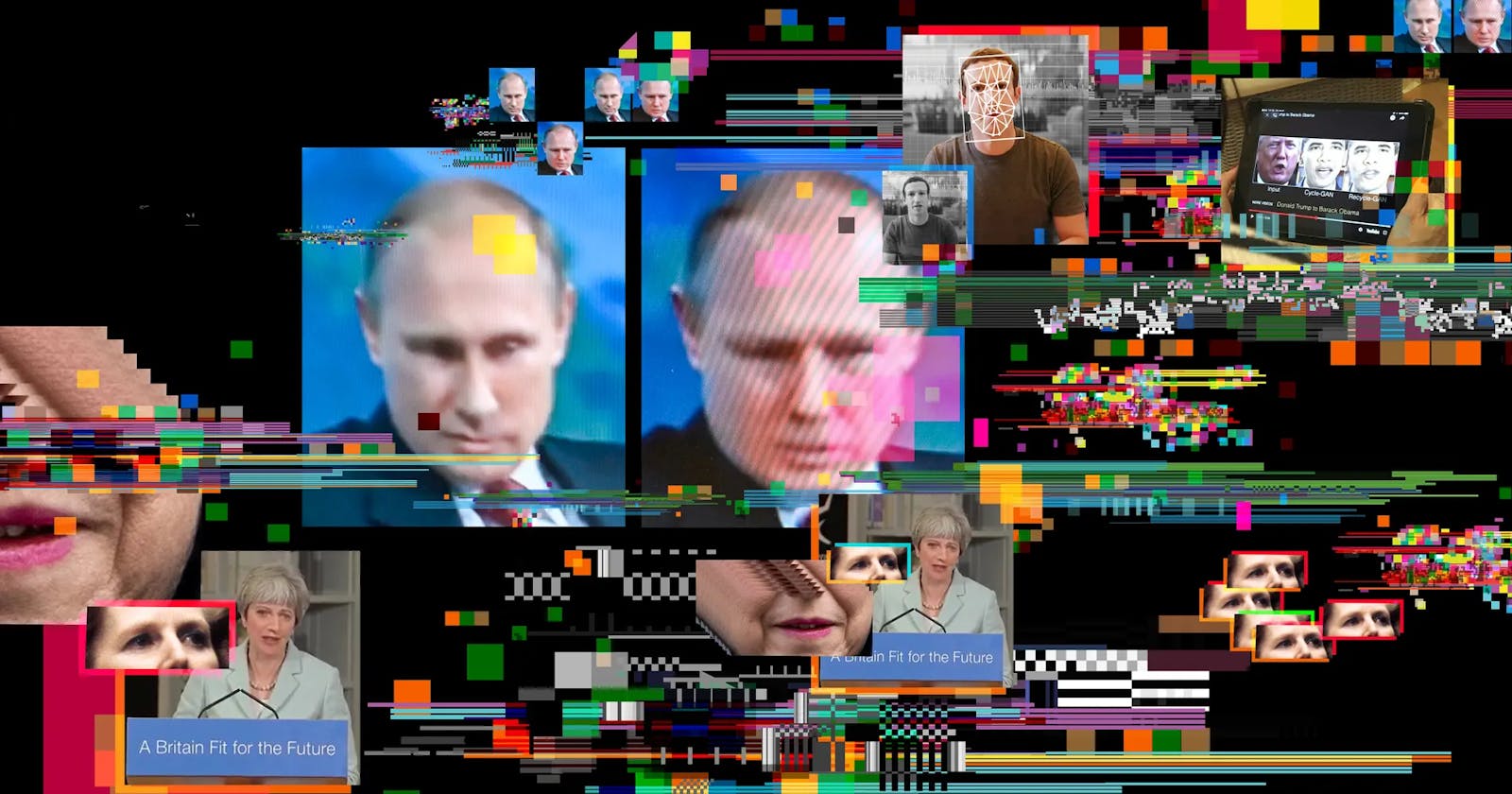When Seeing is No Longer Believing: How Deepfakes are Reshaping Our World and Challenging Reality :
How many times have you seen a video of a renowned person saying something strange that you thought they would never say? How many times have you heard misleading information distributed from a reliable source? Will the film Face/Off, starring Nicolas Cage and John Travolta, become a reality?
Welcome to the era of false news/fake videos, often known as "Deepfake," which you will hear more of shortly. Deepfakes have received a lot of attention due to their usage in celebrity pornographic films, revenge porn, fake news, hoaxes, and financial fraud. This has prompted both businesses and government to respond by detecting and limiting their usage. In this blog, I am going to explain “Deepfake” in simple terms. You must watch ‘You Won’t Believe What Obama Says In This Video before reading the next section.
What exactly is Deepfake?
Deepfake (a combination of "deep learning" and "fake") is synthetic media in which a person in an existing photograph or video is replaced with someone else's likeness, according to Wikipedia. In their most prevalent form, films in which one person's face has been successfully replaced with a computer-generated visage that often resembles a second person in ways that a human editor may not think of or notice.
While the act of faking information is not new, Deepfakes use advanced machine learning and artificial intelligence techniques to edit or synthesize visual and auditory content that has a high potential for deception.
How are Deepfakes created?
Deepfakes are often made using Artificial Intelligence (AI) software that substitutes the person in the video's face and voice. This requires someone who can imitate the human (movement, appearance, and voice), and the rest is handled by software.
Using two competing AI systems to produce deep fake material is one method. The encoder is responsible for creating multimedia material, whereas the decoder is responsible for recovering faces from compressed pictures. With deep fakes, you feed thousands of face images of two persons (person A & person B) through an encoder, just like in a traditional machine learning process where you train your model by passing magnitudes of data. The encoder discovers and learns the similarities between the two faces, detects their shared characteristics, and compresses the pictures as a result. After that, the decoder is trained to retrieve the faces from the compressed pictures. As the faces of A & B are different, you train one decoder to recover the face of person A and another decoder to recover the face of person B. Once this is done, you perform a face swap by simply feeding encoded images (person A) into the wrong decoder (trained to decode person B). The decoder then reconstructs the face of person B with the expressions and orientation of face A.
Deepfakes are also constructed using generative adversarial networks (GANs), a machine learning technique in which two neural networks fight to become more accurate in their predictions. GAN competes between two algorithms. The first algorithm, known as the generator, generates multimedia information and then asks the second algorithm, known as the discriminator, to evaluate if the content is genuine or fake. Each time the discriminator correctly recognizes faked material, the generator gains vital knowledge on how to enhance the next iteration of deep fake. The synthetic images will initially look nothing like the source photographs, but with enough cycles and input, the generator will begin creating accurate images. As the generator gets better at creating deep fakes, the discriminator gets better at spotting the difference and vice versa.
What are the negative aspects of Deepfakes?
Deepfake can be used to make amusing material, but it can also be used to disseminate false information, sway voters, incite religious strife, or cause chaos. It may also be used to cause havoc, such as affecting stock prices. Tesla shares plummeted in 2018 when Elon Musk smoked marijuana on a live online broadcast. In 2019, Donald Trump returned home early from a NATO conference when authentic footage of other global leaders reportedly insulting him surfaced.
Another possible danger deepfakes introduces is that people will take such videos at face value without realizing its fake but once they realize they will stop trusting even the legitimate videos. This will create a zero-trust society, where people cannot, or no longer bother to, distinguish truth from falsehood
Is Deepfake only about videos?
No, deepfake technology can be used to create realistic fictional photos or create voice clones of public figures which might be very difficult to identify compared to deepfake videos.
How can you spot Deepfakes?
Researchers revealed in 2018 that deepfake faces do not blink naturally since the bulk of the photos shows individuals with their eyes open, therefore the algorithm never learned about the blinking. That appeared to be the ideal technique for detecting deepfakes at first, but as deepfake technology advanced, we began to notice deepfakes with flashing eyes.
Deepfakes may be difficult to identify with the human eye, but if you examine deepfakes attentively, you may be able to spot them.
Poor-quality deepfakes are easier to spot
The lip-synching might be bad,
Patchy skin tone,
Flickering around the edges of transposed faces,
Fine details, such as hair, teeth are not rendered well
For high-end deepfakes pay attention to the face as manipulations are mostly facial transformations.
- Does the skin appear too smooth or wrinkly?
Does the age of the skin similar to the age of the hair and eyes?
Do you find any abnormality between eyes and eyebrows?
Does the shadow appear in the right place?
Does the facial mole look real? Does the size and color of the lips match the rest of the person’s face?
Summary :
Don't believe everything you see online, especially. Before sharing the deepfake with your friends and family, conduct some investigation (a simple Google/Bing/Yahoo search).
